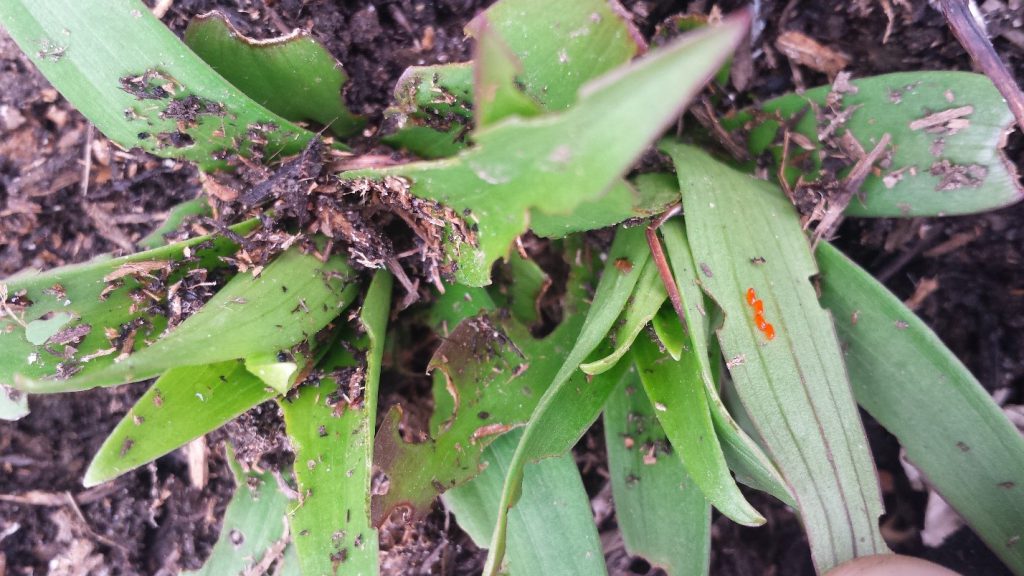Scientific name: Lilioceris lilii
What Is It?
The scarlet lily beetle (also known as the lily leaf beetle) is a pest native to Eurasia that preys on true lilies and fritillaries. While all lilies are attacked, Asiatic lilies or hybrids and some native North America lilies tend to receive the most damage. It also eats, though not as readily, giant lilies (closely related to true lilies) false Solomon’s seal, and twisted stalk. The beetles do not attack daylilies.
Is It Here Yet?
Yes. Scarlet lily beetles have been in Bellevue since 2012.
Why Should I Care?
Scarlet lily beetles can damage homeowners’ gardens severely and are known to voraciously attack native lilies. Preventing an infestation from spreading is the most effective and least costly way to protect uninfested areas.
How Can We Stop It?
Removing beetles, larvae, and eggs throughout the growing season beginning in April is an effective way to limit the damage. Avoid transporting lilies, fritillaries, and other potential host plants long distances to limit the spread of this pest. The Washington State Department of Agriculture has begun a program to introduce a safe biological control agent, which has been very effective in controlling lily leaf beetle populations in the eastern United States.
What Are Its Characteristics?
- Black underside, head, antennae, and legs; bright red backs.
- Adults may chirp or squeak if disturbed.
- About 1/4 to 1/2 inch long.
- Small clusters of red or orange-brown eggs laid on underside of leaves.
- Larvae coat themselves in excrement, and appear dark and slimy.
How Do I Distinguish It From Native Species?
The most likely insects that would be confused with the scarlet lily beetle are ladybugs, a beneficial beetle. Ladybugs are much more round, and usually have white dashes or black spots on their backs.
Additional Photographs





